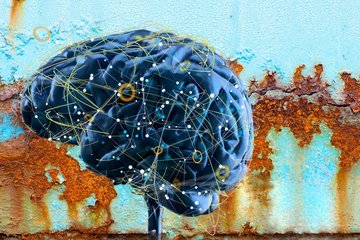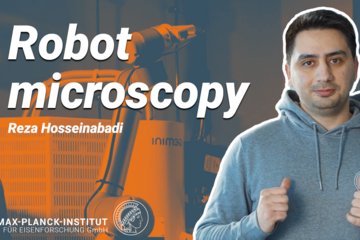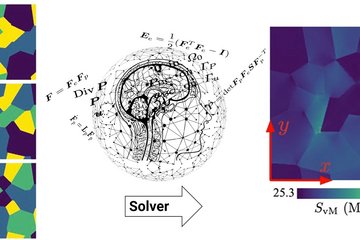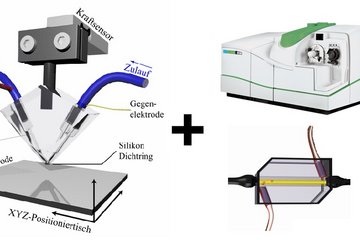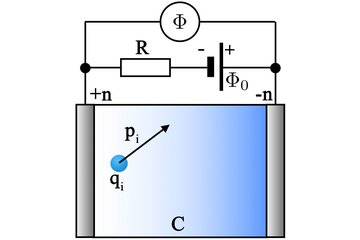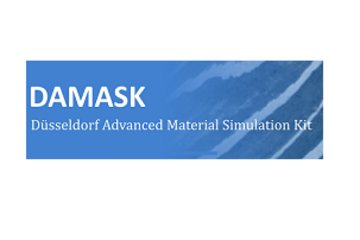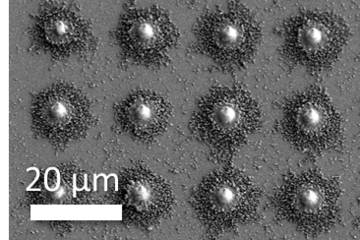All genres
1001.
Talk
First principles determination of phase transitions in magnetic shape memory alloys. Calphad XXXIX, Jeju Island, South Korea (2010)
1002.
Talk
First principles concepts to determine the heat capacity of Fe-based alloys. Calphad XXXIX, Jeju Island, South Korea (2010)
1003.
Talk
Ab initio based study of multi-scale elastic properties of hierarchical biocomposites. Seminar talk at Masaryk University, Brno, Czech Republic (2010)
1004.
Talk
Impurity ordering in iron: An ab initio based multi-scale approach. GraCoS Workshop (Carbon and Nitrogen in Steels: Measurement, Phase Transformations and Mechanical Properties), Rouen, France (2010)
1005.
Talk
Defect distributions at III-nitride interfaces from ab-initio-based thermodynamic data. DPG spring meeting, Regensburg, Germany (2010)
1006.
Talk
Exploring the unusual diffusion of N adatoms on GaAs(001) using first principles calculations. DPG Frühjahrstagung 2010, Regensburg, Germany (2010)
1007.
Talk
Chemical trends of the solution enthalpy of hydrogen in 3d transition metals in dilute limit, derived from first principles. DPG Frühjahrstagung 2010, Regensburg, Germany (2010)
1008.
Talk
Computing Ab Initio Free Energy Contributions of Point Defects. DPG Frühjahrstagung 2010, Regensburg, Germany (2010)
1009.
Talk
Ab initio analysis of the carbon solubility limits in various iron allotropes. DPG Frühjahrstagung 2010, Regensburg, Germany (2010)
1010.
Talk
Ab initio determination of the magnetic free energy contribution of metallic systems. DPG Frühjahrstagung 2010, Regensburg, Germany (2010)
1011.
Talk
Constructing fully numerical, quantitatively optimized atomic orbitals basis-sets. DPG Frühjahrstagung 2010, Regensburg, Germany (2010)
1012.
Talk
Spin-polarization-induced structural selectivity in substituted Laves phases. DPG Frühjahrstagung 2010, Regensburg, Germany (2010)
1013.
Talk
Ab initio Based Growth Simulations of III-Nitride nanowires. DPG Frühjahrstagung 2010, Regensburg, Germany (2010)
1014.
Talk
First-principles and thermodynamic description of hydrogen interaction with vacancies in fcc iron. DPG 2010 Meeting, Regensburg, Germany (2010)
1015.
Talk
A theoretical study of hyperfine parameters in amorphous silicon. DPG Frühjahrstagung 2010, Regensburg, Germany (2010)
1016.
Talk
Ab initio studies of nano-precipitation and growth in ferritic steels. DPG Frühjahrstagung 2010, Regensburg, Germany (2010)
1017.
Talk
Temperature stabilised surface reconstructions at polar ZnO(0001). DPG Frühjahrstagung 2010, Regensburg, Germany (2010)
1018.
Talk
Multi-scale study of martensite stability in Fe-based solid solutions. DPG spring meeting, Regensburg, Germany (2010)
1019.
Talk
Strain-induced metal-hydrogen interactions across the 1st transition series: An ab initio study of hydrogen embrittlement. DPG Frühjahrstagung 2010, Regensburg, Germany (2010)
1020.
Talk
Atomic-scale quantification of solution hardening mechanisms. DPG Frühjahrstagung 2010, Regensburg, Germany (2010)


